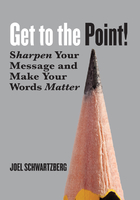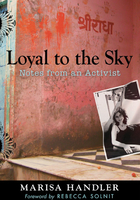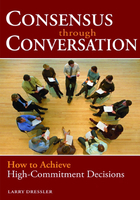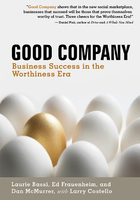Constitutional Rights in Public and Private
IN A SPEECH IN THE HOUSE OF REPRESENTATIVES on June 9, 1789, proposing that a bill of rights be added to the Constitution, James Madison cautioned:
The prescriptions in favor of liberty, ought to be levelled against that quarter where the greatest danger lies, namely, that which possesses the highest prerogative of power: But this [is] not found in either the executive or legislative departments of government, but in the body of the people, operating by the majority against the minority.[1]
Madison had a point, as history has confirmed on so many tragic occasions. But the bill of rights that Madison offered, and the one we ended up with, restrains what government can do to individuals, not what individuals can do to one another. The First Amendment and the rest of the Bill of Rights safeguard the powerless from the powerful in public life, not, for the most part, from the powerful in private life.
Yes, we learned all this back in secondary school, but apparently it didn't stick. We like to celebrate (and self-congratulate) our vigorous collective allegiance to individual rights—free speech among them—as the heart and soul of the American experiment. Alongside this civic pride, or perhaps because of it, we harbor some serious misconceptions about the reach of our rights, especially where the workplace is concerned. Americans cling to a stubborn, if noble, delusion that a right to speak freely trumps an employer's right to control the expressive activity of its workers. In a national opinion survey on rights in the workplace commissioned in 2001 by the AFL-CIO, fully 80 percent of respondents said that it is illegal to fire an employee for expressing political views with which the employer disagrees.[2] Unfortunately, those respondents were wrong—some states have laws protecting employees from being punished for political activity, but most workers enjoy no such protection. In any event, for the person whose neck is on the business end of a falling workplace ax, it is difficult to prove that political views are the reason. Employers, it turns out, enjoy what one labor law expert calls “nearly untrammeled power to censor and punish the speech of their employees.”[3]
How can this be true in the land of free speech? And just how limited are an individual's expressive rights in the face of employer power and discretion? Chapters 4 and [5] will take on the second question with a detailed look at the legal status of free expression in and around the workplace. Before we go there, however, we need a clear sense of the core legal ideas that erect a foundation for this “nearly untrammeled power.” To set the stage, I focus in this chapter and the next on two critical legal principles, or “doctrines” (the preferred term for basic rules of law that arise through judicial decisions over time). This chapter tackles a cardinal element of American constitutional law—the principle of state action. Chapter 3 will look at the basic rule in American labor law known as employment at will. Separately these principles erect limits to rights at work, especially (but not, as we will see later, exclusively) in the private sector. Together, they make it difficult to view the American workplace as anything other than hostile to the idea of free speech.
In broad terms, state action is shorthand for the basic idea that the reach of the U.S. Constitution, and in particular the rights and privileges it grants, extends only to situations where government is involved—where the “state acts.” The flip side of state action is private action—when a private individual or organization is responsible for some outcome. It's often easy enough to divide workplaces into the right piles here. You either work for the government or you don't. Your employer is either a public agency or a private corporation. We can say in general that constitutional rights apply in a government job but not in a private-sector job, and as we'll see in Chapters 4 and [5]there are important differences in employee speech rights across the public-private divide.
A government worker who thinks his employer violated his constitutional rights—say, he was demoted for exercising free speech rights—can go to court seeking a remedy.[4] To win, he'll have to prove several things: that the employer is a state actor and that an infringement of free speech rights occurred and that some negative employment outcome (like being demoted) occurred and that the speech is the actual cause of the demotion.[5] He may or may not win the case, but he can at least be confident that state action is present: the government agency that employs him is clearly a state actor engaged in the conduct of official business. A similar lawsuit by a private-sector worker would fail from the outset because the employer isn't a state actor.
But the nature of the employer isn't always so clear: think of government-created corporations, quasi-public agencies, privatized public services, subcontractors retained by governments, and private businesses operating on public property, to name just a few. Here the line between public and private can be a knotty abstraction rather than a clear division. When a worker at an organization that straddles the public-private divide charges that her employer has violated her constitutional rights, the court has to make a judgment about whether or not state action is present—whether the employer is acting “under color of law,” as a key federal statute puts it.[6] Courts and legal scholars have struggled for decades with how and where to draw the line in making this judgment.[7] With governments increasingly privatizing services or managing them through public-private partnerships, the reach of constitutional rights in the workplace is riding on these judgments—on whether an employer is or isn't a state actor.
Although the term “state action” wasn't coined until much later, a form of it is explicit in the First Amendment: “Congress shall make no law … abridging the freedom of speech, or of the press.” What the First Amendment creates is not an affirmative right to speak freely but a protective right against congressional action—state action, if you will—that might otherwise curtail one's expression. Indeed, for most of the nineteenth century that's all the First Amendment was: a limit on the ability of the Congress to restrain speech. There was little to stop state legislatures from passing laws restricting free expression. Even at the federal level, prevailing ideas about speech deserving protection were a bit more provincial, to judge by Congress' willingness to prohibit “writing, printing, uttering, or publishing any false, scandalous, and malicious writing or writings against the government of the United States” in the notorious Sedition Act of 1798.[8]
What looks like a state-action requirement in the “Congress shall make no law” language of the First Amendment is only dimly related to the development of the lasting legal doctrine known as “state action” in constitutional law. That's because the principle of state action arose not from controversies over free speech but from laws and cases about civil rights and race discrimination following the Civil War. It's a compelling piece of legal and political history that profoundly affects how constitutional law works on this country, with ramifications that stretch far beyond the narrow context of racial discrimination from which it emerged.
THE CIVIL RIGHTS CASES
A short version of this history begins with the 1868 ratification of the Fourteenth Amendment, which stopped states from enforcing laws that “abridge the privileges and immunities of citizens.” Translation: the liberty guarantees contained in the Bill of Rights—regarding free speech, due process, search and seizure, cruel and unusual punishment, and so forth— which originally applied only to actions by the federal government (“Congress shall make no law …”) now applied to the states as well. The Fourteenth Amendment also barred states from denying any person “equal protection of the laws” and granted to Congress the power to enforce the amendment's provisions with appropriate legislation. An energized Congress responded by passing various measures during the early 1870s that forced the states to protect black voting rights, improve voter registration practices, and crack down on racial intimidation.[9]
One particular act of Congress—a civil rights measure adopted in 1875—put in motion events leading to the Supreme Court's creation of a state-action doctrine. This 1875 law, formally titled An Act to Protect All Citizens in Their Civil and Legal Rights, made it both a civil and criminal offense to deny anyone “the full and equal enjoyment of the accommodations, facilities, and privileges of inns, public conveyances on land or water, theaters, and other places of public amusement.”[10] For the first time, Congress had used its power to make actions of private discrimination illegal. You can see where this is going from a state-action perspective. If the basic liberty assumption of the Constitution is that we safeguard rights against abuses by government, then is it legitimate for the Congress to pass a law criminalizing infringements on rights that occur through the actions of private parties, such as hotels, theaters, and other public accommodations operated by private individuals?
Eight years after the act's passage, that very question was before the Supreme Court in the form of a collection of five separate cases, each involving discrimination against a black person in violation of the 1875 act. Two of the cases involved denial of accommodation at an inn or hotel, two involved access to theater seats, and one involved seating privileges on a passenger railroad. Consolidated as The Civil Rights Cases, the five cases were argued before the Supreme Court in the spring of 1883, and a ruling came in October of that year.[11] The basic question before the Court was whether Congress had acted within the Constitution when it criminalized private discrimination in the 1875 act. In a resounding defeat for federally enforced civil rights, the Court said no.
The decision, written by Justice Joseph P. Bradley, an appointee of President Grant in 1870, put the principle of state action as a basic legal doctrine into historical motion.[12] Bradley argued that the Constitution isn't supposed to stop any and all actions that infringe on someone's rights, only those that result from actions by the state. His explanation of the difference between incivilities that individuals inflict and those caused by actions of government was an early, seminal statement of the state-action doctrine:
Civil rights, such as are guaranteed by the constitution against state aggression, cannot be impaired by the wrongful acts of individuals, unsupported by state authority in the shape of laws, customs, or judicial or executive proceedings. The wrongful act of an individual, unsupported by any such authority, is simply a private wrong, or a crime of that individual; an invasion of the rights of the injured party, it is true, whether they affect his person, his property, or his reputation; but if not sanctioned in some way by the state, or not done under state authority, his rights remain in full force.[13]
There was one contrary vote on the Court in The Civil Rights Cases— Justice John Marshall Harlan. In a compelling dissent, Harlan conceded that private parties generally can't be charged with violating constitutional rights, but he argued that the private actors involved in these particular cases should be treated differently because they provide public accommodations. “In every material sense,” wrote Harlan, railroads, innkeepers, and managers of public amusements “are agents of the state,” which means they perform public functions that make them subject to public regulation. Otherwise, he said, if these kinds of businesses were allowed to discriminate based on race, “then that race is left, in respect of the civil rights under discussion, practically at the mercy of corporations and individuals wielding power under public authority.”[14] With this argument, Harlan was anticipating the legal battles to come in the twentieth century over gray-area distinctions between public functions and private actors on matters of free speech.
As for the Reconstruction-era evolution of civil rights in America, the ruling in The Civil Rights Cases struck a forceful blow against the power of the federal government to expand and enforce equal protection. As a practical matter, the decision launched a grim future for civil rights protections, which would languish in American law for the next eighty years. Had the Court instead left standing the key provisions of the 1875 act, the notorious 1896 case Plessy v. Ferguson accepting the doctrine of separate but equal might have been differently decided, and the Jim Crow laws (many of them, anyway) might not have survived constitutional scrutiny. (Justice Harlan was again the lone dissenter in Plessy!) Law professor Jack Balkin puts it this way: “By invoking the shibboleth of states' rights to limit Congressional power, the Supreme Court helped crush equal opportunity for blacks for generations.”[15]
STATE ACTION AND FREE SPEECH
As the historical excursion in the last section reveals, the state-action requirement became a central piece of constitutional law because of nineteenth-century controversies over civil rights and equal protection, not because of controversies over free speech or the First Amendment. Nonetheless, state action persists as a core principle that applies to all federal constitutional rights, including those contained within the First Amendment. The basic principle is that when the behavior of a private party interferes with my constitutional rights, I typically cannot seek legal remedies through the courts. I might have an available remedy if there happens to be a law—an act of Congress—authorizing a legal remedy of some sort against the particular action that infringed on my rights. For example, a restaurant that refuses to serve me because of my race is not a state actor so cannot be sued for a constitutional violation, but it can be called to account for illegal discrimination under legislatively created civil rights laws. However, when that same restaurant refuses to allow me to exercise my free speech “rights” by handing out antiwar leaflets to my fellow diners on the premises, I have no recourse because there is neither state action nor any other legal basis for me to take action.
Cases involving free speech with a state-action flavor didn't show up in the courts until well into the twentieth century. In fact, as an intriguing historical aside, cases involving free expression of any flavor didn't really show up on the Supreme Court's agenda until the time of World War I. In a timeline of First Amendment history that appears in a key legal textbook, there is an entry for the Sedition Act of 1798 and an entry for an 1879 case regarding free exercise of religion (a Mormon convicted for bigamy).[16] Those two are the only First Amendment legal highlights during the first 130 years of the republic, until a series of cases beginning in 1917 led the Supreme Court to grapple with issues of protest and dissident speech related to wartime activities.[17]
Beginning in the 1940s and running through the 1980s, the Supreme Court wrestled with the intersection of free speech and state action in a number of cases. These cases mainly involved people engaging in expressive behavior on private property (such as leafleting at a shopping center) who were stopped by the property owner from doing so and went to court asserting an infringement of First Amendment rights. The key question in these cases typically boils down to whether the actions of a private party should be somehow construed as state action because of the nature of the private party and that party's relationship with government. We will look briefly at a few of the key cases that reached the Supreme Court to get a feel for how the law regarding speech on private property (which has everything to do with workplace-related expression) has come to be where it is.
Among the earliest of these is a 1946 case involving a woman named Grace Marsh, a Jehovah's Witness who was arrested for handing out religious literature on a sidewalk in the town of Chickasaw, Alabama. Ordinarily this might be a free speech no-brainer, but the town of Chickasaw, a suburb of Mobile, was actually private property—a company town owned entirely by the Gulf Shipbuilding Corporation. It had the usual features of a town: residential buildings, streets and sidewalks, a sewer system, and a business district—all company owned. There were no obvious divisions or barriers between Chickasaw and its surrounding area; the town like any other was freely accessible to the general traveling public. When Grace Marsh took to the sidewalk to hand out literature, she was warned that she needed a permit to do this and that none would be forthcoming. When asked to leave, she refused and was arrested and later convicted for violating a state trespassing law. Marsh lost on appeal in the Alabama courts, but her First Amendment claim won the day in the U.S. Supreme Court, which ruled that Gulf Shipbuilding's property rights interest “is not sufficient to justify the State's permitting a corporation to govern a community of citizens so as to restrict their fundamental liberties.”[18]
The Marsh case is important because it was among the first to be based on the idea that a private actor can be held responsible for infringements of individual civil liberties—in other words, be treated as a state actor—when it has responsibility for performing a vital public function. But what qualifies as a vital public function? In a later case the Court explained that this involves “the exercise by a private entity of powers traditionally exclusively reserved to the State.”[19] It's easy to see how this principle applies in Chickasaw, a wholly owned company town. But while it might be a clean example of a private entity performing a public function, it's an unusual one in present-day terms, company towns having largely disappeared from the municipal landscape.[20] Even so, the case of Marsh v. State of Alabama remains a notable one because it was the first to define what has come to be known as the “public function test” for the presence of state action.
The Court in some other cases has identified a few specific functions that turn private parties into state actors. One is participation in elections: on several occasions the Court has found it constitutionally unacceptable for a political party—ostensibly a voluntary private association—to erect barriers to participation by race in elections (such as primaries) that are conducted by the party.[21] Another is the management of a public facility: the Court in 1966 refused to allow a city park in Macon, Georgia, that was overseen by a private trust to be operated as a racially segregated facility.[22] Even where a private party is not performing a vital public function, in some situations sufficient state involvement in the private party's (objectionable) behavior creates state action. The famous (in legal precedent terms) example here is a 1961 case involving a privately owned restaurant in Delaware that leased its space in a public building and refused service to a customer because of his race. Because the incident occurred before passage of the Civil Rights Act of 1964, this kind of discrimination by a privately owned business was generally legal. Given the restaurant's location in a public building, however, the Supreme Court ruled that the entanglement between the restaurant and the agency that managed the building amounted to state action: “The State has so far insinuated itself into a position of interdependence with Eagle [the restaurant] that it must be recognized as a joint participant in the challenged activity.”[23] In these cases the courts didn't dismantle the usual requirement for government action; they just carved out narrow exceptions to it.
The Civil Rights Act of 1964 was an important development because it made discrimination a concrete legal wrong regardless of whether the person or the organization doing the discriminating was “public” or “private.” By outlawing all discrimination in employment, education, and public accommodations, the act essentially took the state-action issue out of the picture where discrimination is involved. With a law in place barring discrimination by any kind of employer, there is no need to convince a court that there was state action.
That's where free speech took over as a battleground for state-action controversies. Beginning in the late 1960s, we find a string of cases over the span of several years that brought the Supreme Court back to the collision between state action and the First Amendment—between private property and free speech—for the first time since the Chickasaw, Alabama, case in the 1940s. The Court meandered through these new cases with something short of a consistent approach, although by the end of its run its position on the issue of free speech on private property had become clear—and clearly unsympathetic to those doing the speaking.
First up was a 1968 case known as Logan Valley, involving union members picketing peacefully at a Pennsylvania shopping center to protest the opening of a nonunion supermarket. The owners of the shopping center and the supermarket obtained a court injunction preventing the picketers from trespassing on their property. Claiming that they were exercising First Amendment rights, the union members challenged the injunction. They lost in the Pennsylvania state courts but prevailed in the U.S. Supreme Court, which found that the shopping center served as the functional equivalent of a business district, freely accessible to the public. Trespassing laws, the Court said, should not be used “to exclude those members of the public wishing to exercise their First Amendment rights on the premises,” although it did grant property owners some latitude to make reasonable rules governing free speech on their property.[24] If this sounds like a reprise of the outcome in the Alabama company-town case, it's because, in a sense, it was: the Court relied heavily on the Alabama case in its reasoning, drawing an analogy between the shopping center and the company town's business district.
The tide shifted markedly four years later when the Court took up another shopping center case, this one in Oregon involving antiwar protestors distributing handbills. Security guards forced the protesters off the premises (under threat of arrest), leading the protesters to file a federal lawsuit claiming infringement of free speech rights. The protestors were successful in the lower courts, but the Supreme Court by a close 5-4 margin rejected their First Amendment claim.[25] How do we explain this apparent reversal, even though the circumstances appear similar to the Pennsylvania shopping center case? This case was different, said the Court, because the earlier Pennsylvania case involved speech (union member picketing) that was specifically directed at patrons of a specific store on the property, whereas the antiwar protest in the Oregon case was unrelated to any shopping center activity, leaving protestors with ample alternative options for spreading their message. In a dissenting opinion, Justice Thurgood Marshall stated forcefully his view of the tension between free speech and state action: “We must remember that it is a balance that we are striking— a balance between the freedom to speak, a freedom that is given a preferred place in our hierarchy of values, and the freedom of a private property owner to control his property. When the competing interests are fairly weighed, the balance can only be struck in favor of speech.”[26]
The court found itself swimming in these waters again in 1976 with a case known as Hudgens. This one involved striking union members picketing their employer's store at—yes, you guessed it—a privately owned shopping center in suburban Atlanta, until they were forced to leave under threat of arrest. The case wound up in the Supreme Court after the National Labor Relations Board sided with the picketers, relying, not surprisingly, on that earlier Pennsylvania shopping center case involving labor pickets. Departing again from its ruling in the strikingly similar Pennsylvania case, however, the Court ruled here for the shopping center, and in doing so made it clear that the ruling wasn't about the nature of the speech (as suggested in the Oregon antiwar protest case ruling); it was simply about the rights of property owners to control speech on their property.[27] By now the Court had completely repudiated its earlier view that for First Amendment purposes a privately owned shopping center is like the business district of a privately owned (company) town. A corporation that owns and runs a town might need to respect the First Amendment rights of its occupants, the Court now believed, but a corporation that owns a shopping center need not do so. Thurgood Marshall again dissented with gusto, arguing that private spaces that serve public purposes are important venues for First Amendment activity in modern society:
The owner of the modern shopping center complex, by dedicating his property to public use as a business district, to some extent displaces the “State” from control of historical First Amendment forums, and may acquire a virtual monopoly of places suitable for effective communication. The roadways, parking lots, and walkways of the modern shopping center may be as essential for effective speech as the streets and sidewalks in the municipal or company-owned town.[28]
Then in 1980 came Pruneyard, an important coda within the expansive symphony of shopping center-based free speech litigation. By now the Supreme Court, with its ruling in the Hudgens case, had made clear its very limited tolerance for attempts to assert free speech rights on private property. The Pruneyard case involved some California high school students who went to a privately owned shopping center (called, it will not shock you to learn, “the Pruneyard”) to hand out leaflets and collect signatures on a petition opposing a U.N. resolution. As with “speakers” in the earlier shopping center cases, the students were forced to leave and filed a lawsuit. What makes this one different is that the students sued in state court asserting free speech rights under the California state constitution, not First Amendment rights in federal court, and they won in the California Supreme Court.
The shopping center owner appealed to the U.S. Supreme Court, which sided with the students as well.[29] At the U.S. Supreme Court, the issue was not whether the First Amendment protects free speech at a privately owned shopping center. By this time, after Hudgens, it was clear the Supreme Court didn't think so, and the students would probably have lost had they brought their lawsuit in federal court in the first place. The issue was whether the state of California could interpret its own constitution as granting free speech rights at a privately owned shopping center. In ruling for the students, the U.S. Supreme Court said that a state is at liberty to grant expressive rights that are more generous than those guaranteed by the U.S. Constitution.
The Pruneyard outcome raises an important side issue about free speech and the state-action requirement. In this case speech was permitted because the California court saw in its state constitution a more expansive view of free speech on private property than the federal courts found in the U.S. Constitution. Other states besides California mention free speech in their state constitutions. So have other states followed California's lead, allowing free speech on private property? And does that mean that the state-action requirement isn't really an obstacle to free speech? The short answers are no and no. With respect to shopping centers and malls, where many of these speech-on-private-property cases play out, only a handful of states offer more protection than we find at the federal level, and those that do tend to have laws that are confined to narrow circumstances.[30] To cite one example, in New Jersey visitors to certain kinds of shopping centers have a right to expression that is confined to “leafleting and associated speech in support of, or in opposition to, causes, candidates, and parties—political and societal free speech.”[31] So presumably you can leaflet against the war, but not against the quality of the pizza.
Returning to the U.S. Supreme Court, we look at a final example that takes us out of the mall and into the workplace, where the speech at issue cost people their jobs. Five teachers and a staff member were fired by a private school in Massachusetts after voicing sympathy with student protests against decisions by the school's director. The fired educators saw potential state action here because even though it was a private school, public funds accounted for more than 90 percent of the school's operating budget (it was a tuition-free nonprofit school primarily enrolling students with drug, alcohol, or behavioral problems or other special needs). The educators argued in court that the school was performing a public function and was involved in a close symbiotic relationship with the state, making the dismissals a form of state action in violation of their constitutional rights. The U.S. Supreme Court rejected these arguments out of hand, noting, “that a private entity performs a function which serves the public does not make its acts state action” and observing that “the school's fiscal relationship with the State is not different from that of many contractors performing services for the government.”[32] Translation: it's not a public function just because it serves the public.
THE CURRENT STATE OF STATE ACTION
The outcomes of all these cases can be distilled into a few concise points. An action by a private party that limits my constitutional rights (to free speech, due process, equal protection, etc.) cannot be legally challenged unless I can convince a court that the private party should be construed as a state actor. The situations where a private party “becomes” a state actor can be boiled down to a couple of categories.[33] The first category is when the private party's activity is sufficiently public in nature that the state assumes responsibility for it. Lawyers call this the “public function test,” and it requires that the private party is engaged in an activity that is normally reserved to government. The second category includes situations where connections between the private actor and the government make them symbiotic or inseparable; lawyers refer to this as the “nexus test.” As the Massachusetts private school case illustrates, financial ties between the government and a private actor are not sufficient to meet the test.
Both of these tests are highly subjective, so it comes as little surprise that they are not as easily applied as the word “test” might suggest. “Subjective” is my label for them. “Hopelessly indeterminate” is law professor John Fee's; he says it's “impossible to develop any set rules for determining when a private person should be fairly considered a state actor, so instead they [the courts] have created a list of criteria that are highly flexible and easily manipulated.”[34] The result is a frustrating state of affairs in which it can be difficult to know if a private party is or is not a state actor. Fuzzy though the rules may be, it does appear that the Supreme Court over the last few decades has grown less willing to find state action in private behavior.[35] That means fewer rights for workers in private-sector jobs.
Given the importance of state action to our constitutional system, combined with the messiness involved in its application to actual situations, we should not be too surprised that legal scholars have been dissecting, analyzing, and criticizing the state-action doctrine for decades. Writing forty years ago, the influential constitutional scholar Charles L. Black called state action “the most important problem in American law.”[36] Thirty years later, another influential scholar, Julian Eule, wrote, “Almost no one seriously defends the [state-action] doctrine in its present form.”[37] The arguments in its defense focus on its value as a protection of private liberty that safeguards private individuals' freedom of action.[38] Critics see it as not just inconsistent in application but also perplexing as an instrument of liberty. Why, they ask, should a free society tolerate violations of basic constitutional freedoms just because they are perpetrated by a private party rather than the government?[39]
Another objection to the doctrine of state action rests on an internal contradiction. We can usually figure out without much difficulty whether some action is taken by a public or a private party. But keep in mind that just about every private action has a public aspect to it. What I mean here is that someone's ability to do something as a “private party” may well rely on the “public” system of laws and rights that we live in. Here's an illustration: Suppose I run a private company, you work for me, and I decide to fire you because I don't like the political bumper sticker on your car out in the parking lot. Since I'm a private employer, the act of firing you seems like a private act. However, it is our system of employment and property law—a public system—that makes it possible for me to enforce my wishes, or to defend myself against your efforts to violate my wishes. Employment law (as we will explore in the next chapter) lets me tie your job to your politics. Trespassing law lets me call in the authorities to have you removed if you won't go willingly.
The division between private action and state action is built on a kind of myth. As a private employer, I need not respect your free speech rights because there is no state action in what I do, so at my workplace you have no rights. But to say that there is no state action in my private behavior is to ignore how government makes it possible for me to pursue my private behavior. Pondering this paradox, law professors Gary Peller and Mark Tushnet observe that “every exercise of ‘private’ rights in a liberal legal order depends on the potential exercise of state power to prevent other private actors from interfering with the rights holder.”[40] Cass Sunstein puts it more succinctly: “State action is always present.”[41]
A less ethereal and more practical concern is that state action might be outdated in the sense that it hasn't sufficiently adapted to our present-day economic realities. There are a couple of angles to this criticism. One is the expanding trend toward privatizing activities that were traditionally undertaken in the public sector.[42] We see this on a variety of fronts, with governments now routinely farming out services related to welfare, public health, education, corrections, and public works, to name a few.[43] What does it mean to say that state action applies to private behavior that would ordinarily be a government function, when the very nature of government function is changing? The second angle asks how we square state action with the expansion of large institutions in the private sector that exert significant control over our everyday lives as individuals. Charles Reich develops this argument in a provocative 1991 article, declaring the state-action doctrine “obsolete”:
Large organizations are governmental in nature, and government itself is just another large organization. The interests of these two kinds of large organizations are far more similar than they are different…. We should, therefore, interpret any constitutional guarantee against harm coming from the “state” to mean harm from any organization that possesses sufficient power to be “governmental” in its ability to dominate and control individuals.[44]
The public-private distinction that drives the state-action principle, Reich contends, is inconsistent with what the framers of the Constitution had in mind—they could not anticipate the rise of large quasi-public organizations we find now, nor could they anticipate the adverse effects of these organizations on individual liberty.
Perhaps the state-action principle has outlived its usefulness, but it isn't going anywhere anytime soon. Forceful critiques of it by legal academics have been around for decades, but there is no indication that the U.S. Supreme Court has been or is likely to be influenced by them. This means that constitutional rights, including freedom of speech, will continue to be imaginary rights in private settings. Private corporations and organizations row ever more powerful in relation to the daily lives of individual Americans, and the law fails to adjust, leaving citizens with fewer opportunities to exercise basic rights. For workers holding private sector jobs—which is to say most of us—this situation means hanging up your constitutional rights along with your coat at the start of a workday. You get them back at the end of the day—perhaps: work consumes more waking hours, the boundaries between work and off-work dissolve in an online haze of nonstop digital connectedness, and even time spent truly away from the job is increasingly likely to be spent under the control of some sort of private enterprise. The result is a diminishing sense of time and space for free speech.
The principle of state action is a major culprit because of the fundamental line it draws between the actions of government, which is obligated to respect constitutional rights, and private parties, which are not. As we'll see in Chapters 4 and [5]your rights to expression on and off the job do vary a good bit depending on whether you work for a public- or a private-sector employer. Even so, neither kind of workplace brings much in the way of freedom of expression. To understand why, I turn next to a basic principle of labor law, one that is chiefly responsible for the inhospitable climate for free speech in the American workplace.
注释:
[1]James Madison, “James Madison's Speech to House of Representatives Proposing Bill of Rights,” The James Madison Center at James Madison University, (accessed June 16, 2006).
[2]AFL-CIO, Workers Rights in America: What Workers Think About Their Jobs and Employers (Washington, DC: AFL-CIO, 2001), 17.
[3]Cynthia L. Estlund, “Freedom of Expression in the Workplace and the Problem of Discriminatory Harassment,” Texas Law Review 75 (1997): 689.
[4]The ability to file a lawsuit against a government employer for a constitutional violation actually varies depending on the branch of government involved. State and municipal employees have a clear procedural path to mounting such a claim under the federal law known as Section 1983 (42 U.S.C. § 1983). This option is not available to federal employees. The Supreme Court has held that civil service rules created by Congress provide sufficient procedural opportunities and safeguards for federal workers with constitutional complaints about their employers, so it has declined to offer federal workers a judicial remedy. Bush v. Lucas, 462 U.S. 367 (1983); see also Correction Services Corp. vs. Malesko, 534 U.S. 61 (2001), 68.
[5]Michael L. Wells, “Section 1983, the First Amendment, and Public Employee Speech: Shaping the Right to Fit the Remedy (and Vice Versa),” Georgia Law Review 35 (2001): 969-975.
[6]42 U.S.C. § 1983.
[7]Karen M. Blum and Kathryn R. Urbonya, Section 1983 Litigation (Washington, DC: Federal Judicial Center, 1998), (accessed June 14, 2006), 5-6.
[8]Ch. 74, § 2, 1 Stat. 596 (1798).
[9]For a concise review of these legal and constitutional developments, see Jack M. Balkin, “History Lesson,” Legal Affairs, July/August 2002, (accessed May 12, 2006).
[10]Ch. 114, § 1, 18 Stat. 335 (1875).
[11]The Civil Rights Cases, 109 U.S. 3 (1883).
[12]Although The Civil Rights Cases are widely regarded as the key judicial origin of the state-action doctrine, there was a hint of the doctrine articulated by the Court's opinion in an earlier case, United States v. Cruikshank: “The fourteenth amendment prohibits a State from depriving any person of life, liberty, or property, without due process of law; but this adds nothing to the rights of one citizen as against another.” 92 U.S. 542 (1875), 544. A clearer statement followed in another case four years later: “The provisions of the Fourteenth Amendment of the Constitution … all have reference to State action exclusively, and not to any action of private individuals.” Virginia v. Rives, 100 U.S. 313 (1879), 318. See Erwin Chemerinsky, “Rethinking State Action,” Northwestern University Law Review 80 (1985): 507 n. 16.
[13]The Civil Rights Cases, 109 U.S. 3 (1883), 17.
[14]Ibid., 58-59.
[15]Balkin, “History Lesson.” As Balkin explains, the 1964 Civil Rights Act might also have been found unconstitutional unless the Supreme Court was willing to overturn The Civil Rights Cases ruling. In the end, however, the 1964 act survived constitutional challenges with a defense on different grounds: as a legitimate form of regulation of interstate commerce. Following the New Deal, federal courts granted the government wide latitude to enforce economic regulation. Five months after the 1964 act was signed into law, the Supreme Court ruled that it fell within the regulatory power of Congress under the Commerce Clause. Heart of Atlanta Motel, Inc. v. United States, 379 U.S. 241 (1964).
[16]Geoffrey R. Stone, Louis M. Seidman, Cass R. Sunstein, Mark V. Tushnet, and Pamela S. Karlan, The First Amendment, 2nd ed. (New York: Aspen, 2003), lxxiii.
[17]For a review of these cases see David M. Rabban, Free Speech in Its Forgotten Years (Cambridge: Cambridge University Press, 1997). Contrary to the conventional view that the nineteenth century was a dormant period for First Amendment law, Rabban points to substantial debate and litigation on free speech between 1800 and 1917 as deserving of historical attention.
[18]Marsh v. State of Alabama, 326 U.S. 501 (1946), 509.
[19]Jackson v. Metropolitan Edison Co., 419 U.S. 345 (1974), 352.
[20]Al·ynda Wheat and Ellen Florian, “Company Town,” Fortune, April 14, 2003, (accessed May 13, 2006).
[21]Nixon v. Condon, 286 U.S. 73 (1932); Smith v. Allwright, 321 U.S. 649 (1944); Terry v. Adams, 345 U.S. 461 (1953).
[22]Evans v. Newton, 382 U.S. 296 (1966).
[23]Burton v. Wilmington Parking Auth., 365 U.S. 715 (1961), 725.
[24]Amalgamated Food Employee Union Local 590 v. Logan Valley, 391 U.S. 308 (1968), 319.
[25]Lloyd Corp. v. Tanner, 407 U.S. 551 (1972).
[26]Ibid., 580.
[27]Hudgens v. National Labor Relations Board, 424 U.S. 507 (1976).
[28]Ibid., 539-540.
[29]Pruneyard Shopping Center v. Robbins, 447 U.S. 74 (1980).
[30]See Jennifer Niles Coffin, “The United Mall of America: Free Speech, State Constitutions, and the Growing Fortress of Private Property,” University of Michigan Journal of Law Reform 33 (2000): 625-633, for a review of some of these individual state approaches. See also Josh Mulligan, “Finding a Forum in the Simulated City: Mega Malls, Gated Towns, and the Promise of Pruneyard,” Cornell Journal of Law and Public Policy 13 (2004): 533-562.
[31]New Jersey Coalition against War in the Middle East v. J.M.B. Realty Corp., 138 N.J. 326 (1994), 374.
[32]Rendell-Baker v. Kohn, 457 U.S. 830 (1982), 842, 843.
[33]See, for example, Daphne Barak-Erez, “A State Action Doctrine for an Age of Privatization,” Syracuse Law Review 45 (1995): 1174-1186.
[34]John Fee, “The Formal State Action Doctrine and Free Speech Analysis,” North Carolina Law Review 83 (2005): 585
[35]Chemerinsky, “Rethinking State Action,” 505 n. 10; Michael Wells, “Identifying State Actors in Constitutional Litigation: Reviving the Role of Substantive Context,” Cardozo Law Review 26 (2004): 99-125.
[36]Charles L. Black, Jr., “Foreword: State Action, Equal Protection, and California's Proposition 14,” Harvard Law Review 81 (1967): 69.
[37]Julian N. Eule, as completed by Jonathan D. Varat, “Transporting First Amendment Norms to the Private Sector: With Every Wish There Comes a Curse,” UCLA Law Review 45 (1998): 1551 n. 49.
[38]William P. Marshall, “Diluting Constitutional Rights: Rethinking ‘Rethinking State Action,’” Northwestern University Law Review 80 (1985): 558-570.
[39]Chemerinsky, “Rethinking State Action.”
[40]Gary Peller and Mark Tushnet, “State Action and a New Birth of Freedom,” Georgetown Law Journal 92 (2004): 789.
[41]Cass R. Sunstein, “State Action Is Always Present,” Chicago Journal of International Law 3 (2002): 465-469.
[42]Barak-Erez, “A State Action Doctrine.”
[43]Paul Starr, “The New Life of the Liberal State: Privatization and the Restructuring of State-Society Relations,” in Public Enterprise and Privatization, eds. John Waterbury and Ezra Suleiman (Boulder, CO: Westview Press, 1990), 22-54; see also Mary Bryna Sanger, “When the Private Sector Competes,” Reform Watch Brief #3, The Brookings Institution, October 2001, (accessed September 18, 2006).
[44]Charles A. Reich, “The Individual Sector,” Yale Law Journal 100 (1991): 1429.















